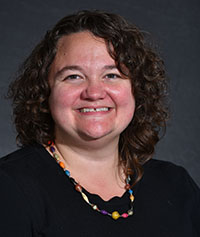Collaboration and Critical Mathematical Inquiry: Negotiating Mathematics Engagement, Identity, and Agency
by Frances K. Harper
Theories of critical pedagogy imagine a problem-posing model of education. This means students raise their own questions about social injustice and work alongside their teachers to address those questions, using the most appropriate disciplinary content (Freire, 1970). Translating this vision to mathematics education suggests that students critically interrogate causes of and remedies to social injustice through powerful forms of mathematical reasoning and inquiry that builds on their knowledge of mathematics and their community to ask questions, solve problems, and explain ideas—that is, critical mathematical inquiry (CMI).
There are examples of this approach to CMI in mathematics classrooms (e.g., Aguirre, Mayfield-Ingram, & Martin, 2013). Often, however, efforts to realize CMI in the school context result in more teacher-led than student-led activities, particularly at the secondary level (Harper, in press). The mathematical inquiry involved in tackling authentic social justice questions is quite “messy.” CMI often requires mathematics content above students’ grade level, and the interdisciplinary nature of CMI presents significant challenges, given the isolated nature of secondary mathematics. In response, teachers often revert to procedural or direct instruction in an attempt to make CMI more accessible to students, but this response may inadvertently limit students’ engagement with mathematics (Gutstein, 2003) and with the social justice topic.
About the Author
 Frances K. Harper is an assistant professor of STEM education at the University of Tennessee, Knoxville. Her research broadly focuses on issues of equity and social justice in mathematics education and mathematics teacher education. She strives to understand K-12 students’ experiences with equity-minded mathematics teaching. In particular, her work focuses on how complex instruction, a particular equity-minded approach to collaborative learning, and teaching mathematics for social justice, the integration of mathematics and social justice goals, support girls and students of color to see themselves and to be seen as confident and capable learners and doers of mathematics.
Frances K. Harper is an assistant professor of STEM education at the University of Tennessee, Knoxville. Her research broadly focuses on issues of equity and social justice in mathematics education and mathematics teacher education. She strives to understand K-12 students’ experiences with equity-minded mathematics teaching. In particular, her work focuses on how complex instruction, a particular equity-minded approach to collaborative learning, and teaching mathematics for social justice, the integration of mathematics and social justice goals, support girls and students of color to see themselves and to be seen as confident and capable learners and doers of mathematics.